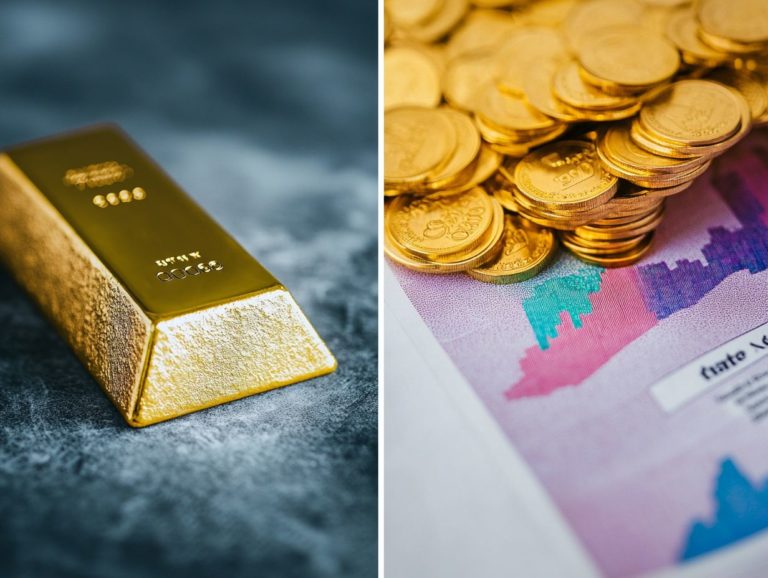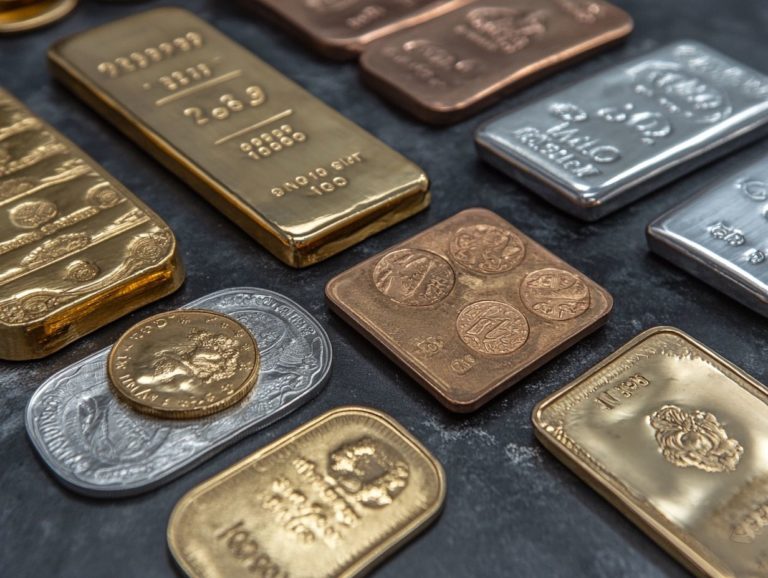The Future of Physical vs. Paper Investments
In today's fast-paced financial landscape, understanding the differences between physical and paper investments is more essential than ever.
This article delves into the definitions and comparisons of these two investment types, illuminating their unique advantages and drawbacks.
Explore the pros and cons of owning tangible assets versus securities and contracts, while gaining insights into current market trends.
Look ahead to potential shifts in both domains. Join us as we explore this investment landscape!
Contents
Key Takeaways:
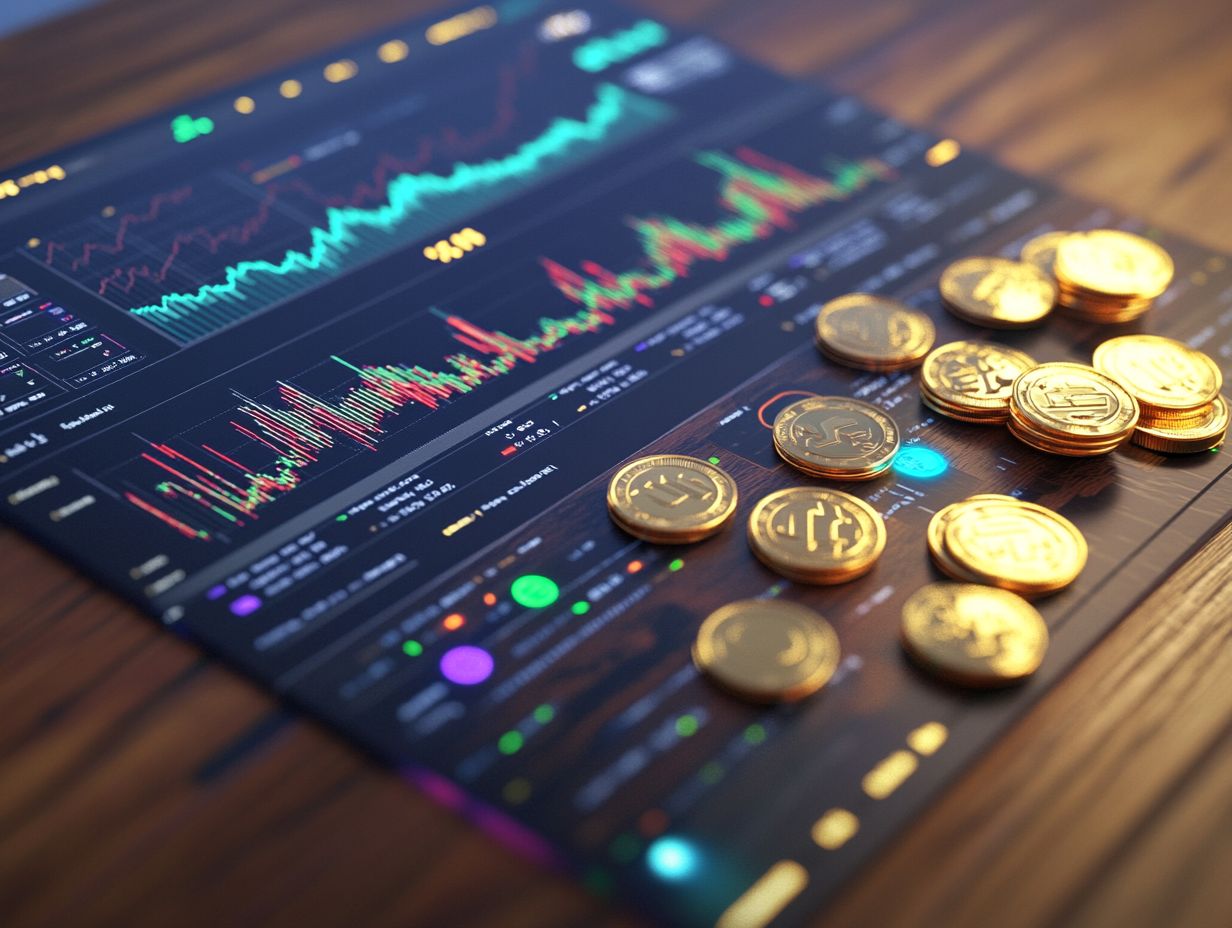
- Physical investments offer tangible assets, while paper investments are securities and contracts.
- Advantages of physical investments include ownership, while disadvantages include storage and the ability to quickly convert an asset to cash.
- Paper investments can provide higher returns but also come with risks and are subject to market trends.
Overview of Physical and Paper Investments
Investing in gold has changed dramatically, now encompassing both physical and paper assets. Physical gold think bullion bars and gold coins offers you a tangible refuge during economic turbulence, acting as a reliable safe haven.
On the other hand, paper gold options like Gold ETFs and mutual funds deliver liquidity and convenience, making them an attractive choice for those seeking to diversify their portfolios.
Understanding the intricacies between these two investment types is crucial for realizing your investment objectives and achieving financial stability in an unpredictable market.
Definition and Comparison
Physical gold refers to tangible assets like bullion bars and coins, whereas paper gold encompasses securities such as Gold ETFs that represent a claim on gold held elsewhere.
Both forms of investment carry distinct characteristics that may resonate with different types of investors. For instance, you might see physical gold as a safe haven; its intrinsic value and historical significance provide a hedge against inflation and currency devaluation.
On the other hand, paper gold offers you greater the ability to quickly convert an asset to cash and ease of trading, making it a more accessible option for those keen on entering and exiting positions swiftly.
While physical gold necessitates secure storage and insurance to safeguard against theft, paper gold, though less cumbersome, introduces the risk that the other party in an agreement might not fulfill their obligations especially if the issuing entity encounters financial troubles.
Understanding these nuances is crucial as you navigate the complexities of gold investments.
Advantages and Disadvantages of Physical Investments
Investing in physical gold, like bullion bars and gold coins, presents you with distinct advantages, such as tangible ownership and a proven history as a wealth preservation strategy.
Physical gold acts as a hedge against inflation and economic uncertainty, granting you a sense of security in a landscape often characterized by market volatility and price manipulation.
However, it's essential to recognize the challenges that accompany this investment, including the necessity for secure storage and potential liquidity issues when converting your assets into cash.
Pros and Cons of Owning Tangible Assets
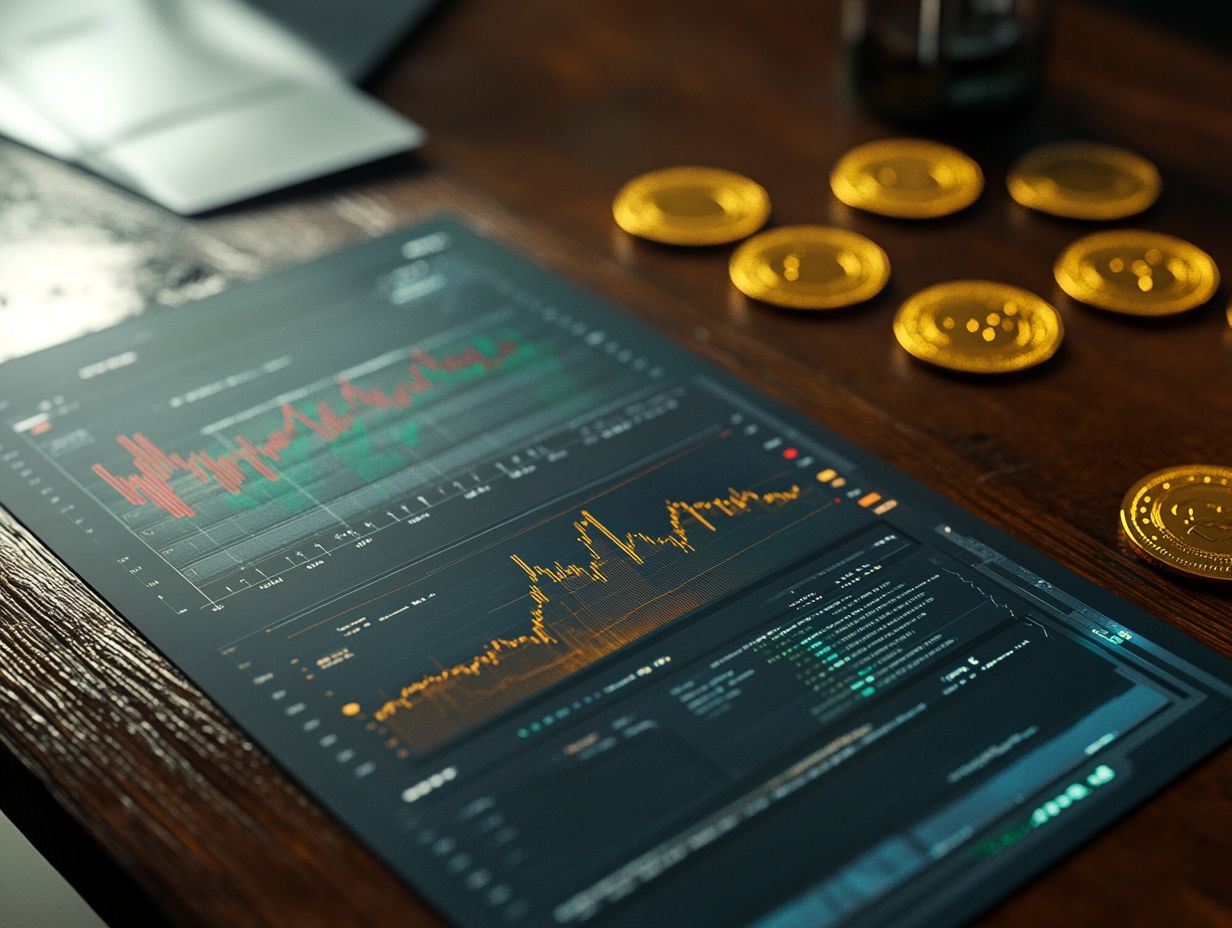
Owning tangible assets like physical gold, whether it's bullion bars or gold coins, brings distinct advantages, particularly in terms of wealth preservation. However, it does introduce some liquidity challenges that you should keep in mind.
These assets often act as a hedge against inflation and economic instability, offering you a safe haven during turbulent times. Historically, gold has maintained its value when fiat currencies fluctuate or lose purchasing power, making it an appealing choice for safeguarding your wealth.
That said, you must also weigh the drawbacks, such as the complexities of buying and selling. Liquidating gold can be a cumbersome process, as it often involves finding a reputable buyer, which can lead to fees that chip away at your profits. Additionally, the physical transport of gold comes with its own set of risks, including theft and loss, complicating ownership and accessibility.
Understanding both physical and paper investments is key to making smart financial choices in today's market.
Advantages and Disadvantages of Paper Investments
Paper investments, like gold ETFs and mutual funds, let you invest in gold without owning it physically. You enjoy greater liquidity and the convenience of trading across various platforms.
However, these investments come with counterparty risks. They may not offer the same security as tangible assets, especially during market volatility.
Pros and Cons of Owning Securities and Contracts
Owning securities like paper gold and gold ETFs has distinct advantages, including high liquidity and easy access via trading platforms. But you should also consider the risks, such as counterparty risk and reduced control over your physical assets.
Many investors prefer gold ETFs for their ability to reflect gold prices without the hassle of storage. This simplifies portfolio management significantly.
While liquidity enhances trading flexibility, market fluctuations can lead to losses. Plus, diversifying your portfolio means weighing gold against other assets like stocks or bonds.
Understanding both the benefits and drawbacks is essential for making informed decisions about gold investments.
Current State of Physical and Paper Investments
The landscape of physical and paper investments in gold shows a complex connection between market trends and economic conditions. Both types react to changes in gold prices and overall demand in the precious metals market.
This dynamic highlights how external factors influence these investments, offering valuable insights into gold’s evolving world.
Market Trends and Performance
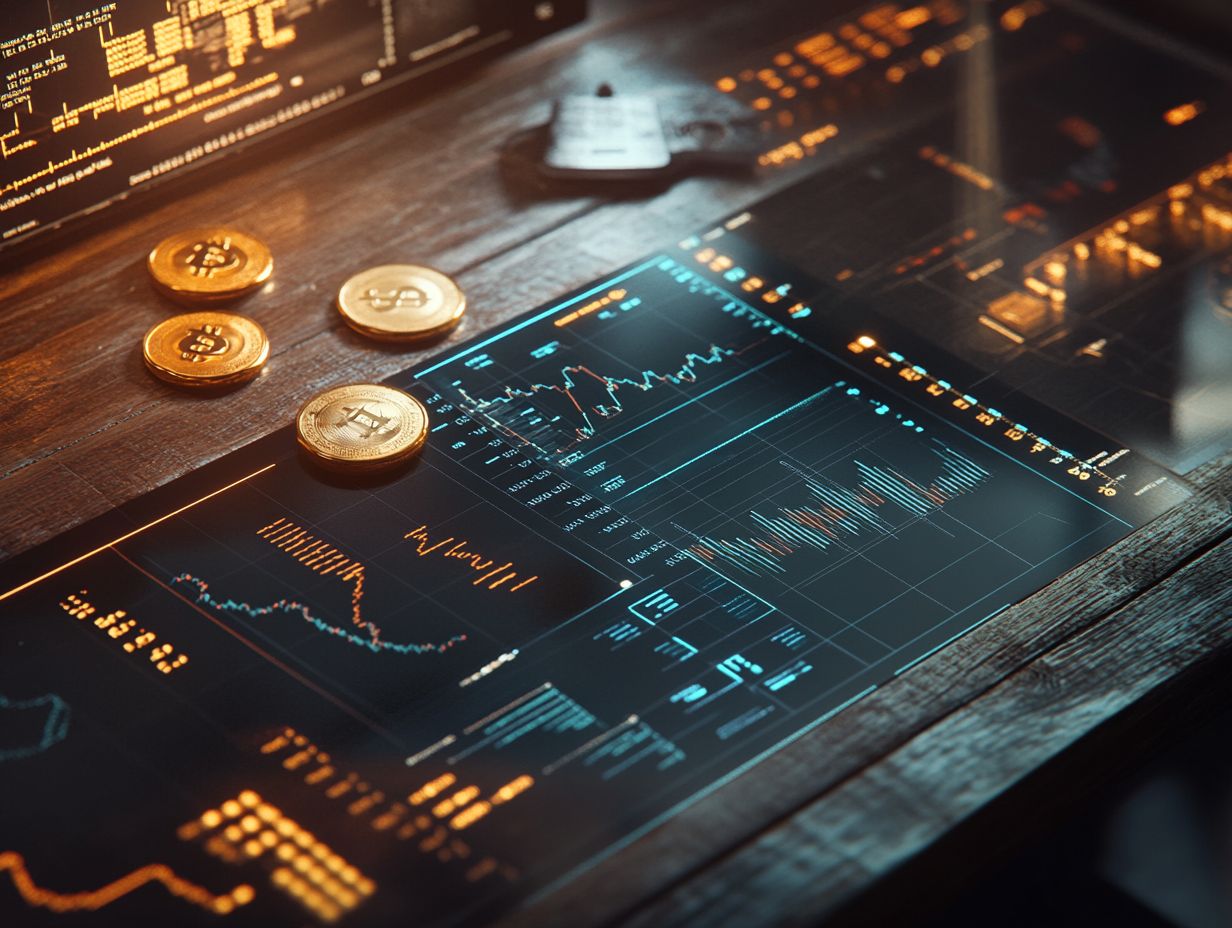
Recent trends show significant fluctuations in gold prices, affecting both physical and paper gold investments, particularly in uncertain economic times.
This volatility is driven by geopolitical tensions, inflation concerns, and a fluctuating stock market prompting investors to seek gold as a safe-haven asset.
While physical gold often has higher storage costs and lower liquidity, paper gold allows for easy trading without the need for physical possession.
Investors are shifting their strategies, aiming to balance portfolios with assets that protect against inflation and market drops. Understanding the future of investing: physical vs. paper dynamics is crucial for making informed investment choices.
The Future of Physical and Paper Investments
As you think about the future of physical and paper investments, it s clear that the gold market is poised for significant changes. Evolving economic conditions and supply-demand shifts will impact price predictions and influence your investment strategies.
Predictions and Potential Changes
Predictions for the gold market hint at a potential increase in demand, driven by economic conditions and the growing quest for safe-haven assets. This shift could prompt significant adjustments to your investment strategies, whether you favor physical gold or paper investments.
With uncertainties surrounding inflation rates and geopolitical tensions, the appeal of gold as a way to protect yourself from market ups and downs becomes ever more enticing. Analysts suggest that fluctuations in currency values, especially the U.S. dollar, will continue to sway gold prices. Therefore, it’s crucial for you to closely monitor these economic indicators.
Factors like interest rates, central bank policies, and growth in emerging markets will further influence the delicate balance of supply and demand. If you re considering investing in gold, remember to spread your investments across different areas and stay well-informed about global economic conditions to make the most strategic decisions possible.
Frequently Asked Questions
What are physical investments?
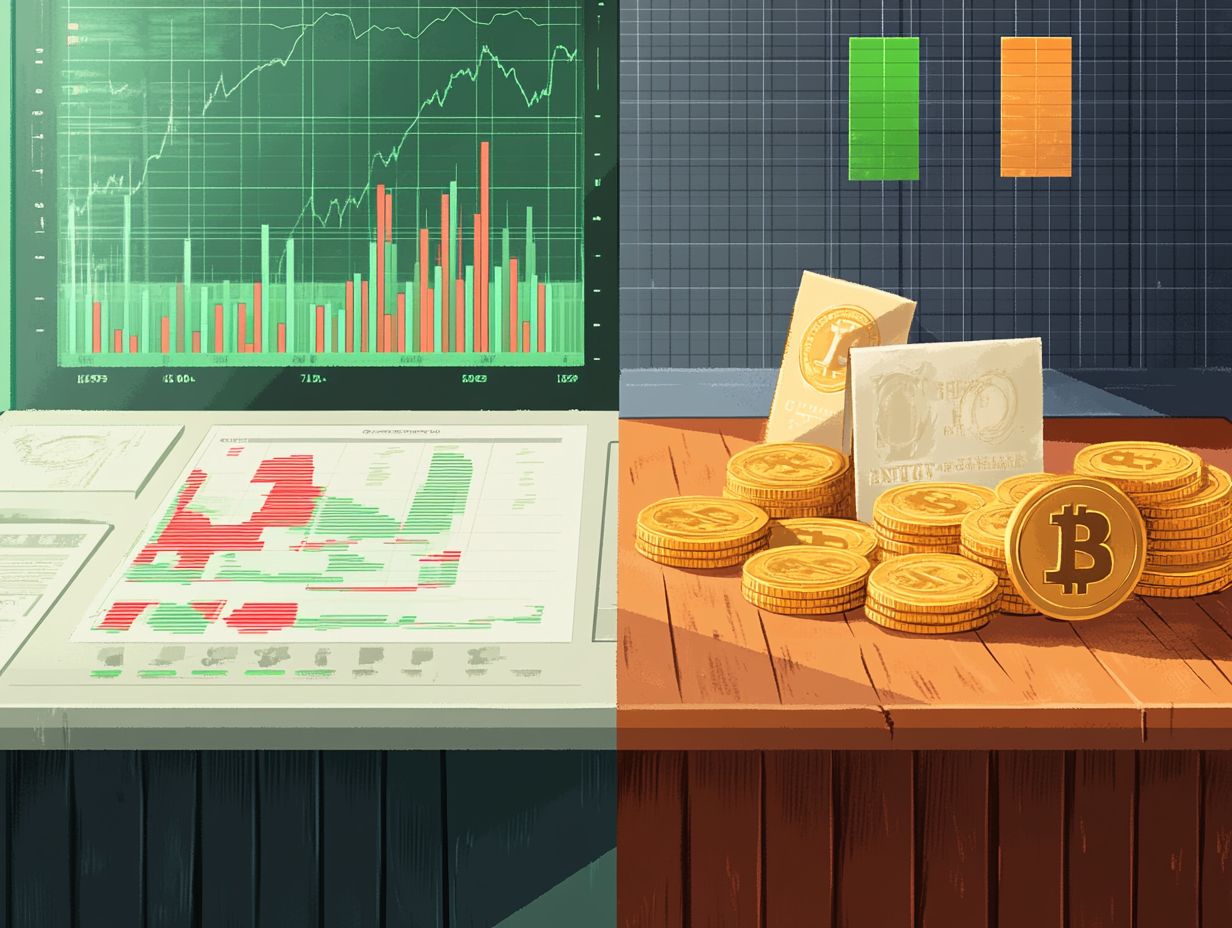
Physical investments refer to tangible assets such as real estate, precious metals, and collectibles that have inherent value and can be physically held.
What are paper investments?
Paper investments refer to financial assets such as stocks, bonds, and mutual funds that represent ownership in a company or debt owed to an investor.
What is the future of physical investments?
The future of physical investments is uncertain due to the rise of digital options, which have made paper investments more accessible and convenient.
How has the trend of paper investments affected physical investments?
More people are choosing paper investments, which has lowered the demand and prices for physical assets.
What are the advantages of physical investments?
Physical investments offer a tangible asset that can provide a sense of security and stability, especially during times of economic uncertainty.
What are the advantages of paper investments?
Paper investments offer flexibility and ease of trading, with the potential for higher returns compared to physical investments.











